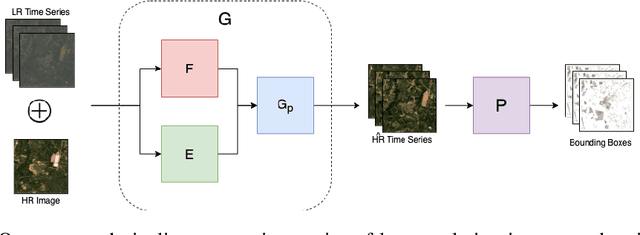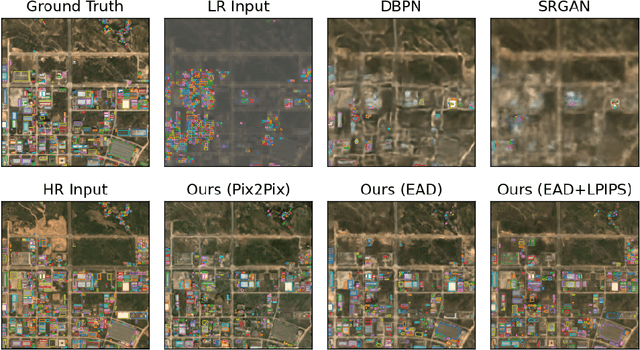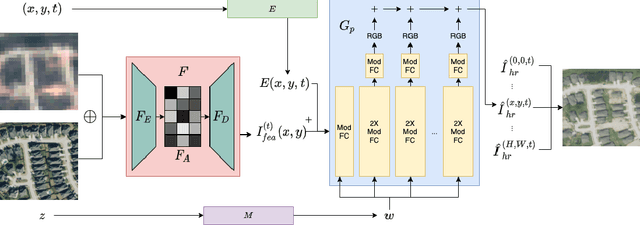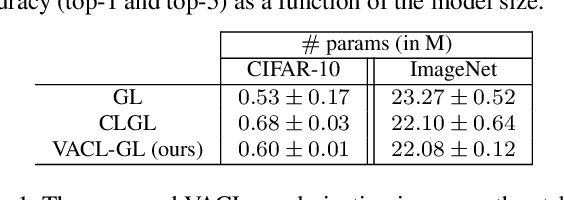William Zhang
Modular and Adaptive Conformal Prediction for Sequential Models via Residual Decomposition
Oct 06, 2025Abstract:Conformal prediction offers finite-sample coverage guarantees under minimal assumptions. However, existing methods treat the entire modeling process as a black box, overlooking opportunities to exploit modular structure. We introduce a conformal prediction framework for two-stage sequential models, where an upstream predictor generates intermediate representations for a downstream model. By decomposing the overall prediction residual into stage-specific components, our method enables practitioners to attribute uncertainty to specific pipeline stages. We develop a risk-controlled parameter selection procedure using family-wise error rate (FWER) control to calibrate stage-wise scaling parameters, and propose an adaptive extension for non-stationary settings that preserves long-run coverage guarantees. Experiments on synthetic distribution shifts, as well as real-world supply chain and stock market data, demonstrate that our approach maintains coverage under conditions that degrade standard conformal methods, while providing interpretable stage-wise uncertainty attribution. This framework offers diagnostic advantages and robust coverage that standard conformal methods lack.
DECO: Life-Cycle Management of Enterprise-Grade Chatbots
Dec 08, 2024



Abstract:Software engineers frequently grapple with the challenge of accessing disparate documentation and telemetry data, including Troubleshooting Guides (TSGs), incident reports, code repositories, and various internal tools developed by multiple stakeholders. While on-call duties are inevitable, incident resolution becomes even more daunting due to the obscurity of legacy sources and the pressures of strict time constraints. To enhance the efficiency of on-call engineers (OCEs) and streamline their daily workflows, we introduced DECO -- a comprehensive framework for developing, deploying, and managing enterprise-grade chatbots tailored to improve productivity in engineering routines. This paper details the design and implementation of the DECO framework, emphasizing its innovative NL2SearchQuery functionality and a hierarchical planner. These features support efficient and customized retrieval-augmented-generation (RAG) algorithms that not only extract relevant information from diverse sources but also select the most pertinent toolkits in response to user queries. This enables the addressing of complex technical questions and provides seamless, automated access to internal resources. Additionally, DECO incorporates a robust mechanism for converting unstructured incident logs into user-friendly, structured guides, effectively bridging the documentation gap. Feedback from users underscores DECO's pivotal role in simplifying complex engineering tasks, accelerating incident resolution, and bolstering organizational productivity. Since its launch in September 2023, DECO has demonstrated its effectiveness through extensive engagement, with tens of thousands of interactions from hundreds of active users across multiple organizations within the company.
Benchmarking LLM Code Generation for Audio Programming with Visual Dataflow Languages
Sep 01, 2024



Abstract:Node-based programming languages are increasingly popular in media arts coding domains. These languages are designed to be accessible to users with limited coding experience, allowing them to achieve creative output without an extensive programming background. Using LLM-based code generation to further lower the barrier to creative output is an exciting opportunity. However, the best strategy for code generation for visual node-based programming languages is still an open question. In particular, such languages have multiple levels of representation in text, each of which may be used for code generation. In this work, we explore the performance of LLM code generation in audio programming tasks in visual programming languages at multiple levels of representation. We explore code generation through metaprogramming code representations for these languages (i.e., coding the language using a different high-level text-based programming language), as well as through direct node generation with JSON. We evaluate code generated in this way for two visual languages for audio programming on a benchmark set of coding problems. We measure both correctness and complexity of the generated code. We find that metaprogramming results in more semantically correct generated code, given that the code is well-formed (i.e., is syntactically correct and runs). We also find that prompting for richer metaprogramming using randomness and loops led to more complex code.
Beyond the Imitation Game: Quantifying and extrapolating the capabilities of language models
Jun 10, 2022Abstract:Language models demonstrate both quantitative improvement and new qualitative capabilities with increasing scale. Despite their potentially transformative impact, these new capabilities are as yet poorly characterized. In order to inform future research, prepare for disruptive new model capabilities, and ameliorate socially harmful effects, it is vital that we understand the present and near-future capabilities and limitations of language models. To address this challenge, we introduce the Beyond the Imitation Game benchmark (BIG-bench). BIG-bench currently consists of 204 tasks, contributed by 442 authors across 132 institutions. Task topics are diverse, drawing problems from linguistics, childhood development, math, common-sense reasoning, biology, physics, social bias, software development, and beyond. BIG-bench focuses on tasks that are believed to be beyond the capabilities of current language models. We evaluate the behavior of OpenAI's GPT models, Google-internal dense transformer architectures, and Switch-style sparse transformers on BIG-bench, across model sizes spanning millions to hundreds of billions of parameters. In addition, a team of human expert raters performed all tasks in order to provide a strong baseline. Findings include: model performance and calibration both improve with scale, but are poor in absolute terms (and when compared with rater performance); performance is remarkably similar across model classes, though with benefits from sparsity; tasks that improve gradually and predictably commonly involve a large knowledge or memorization component, whereas tasks that exhibit "breakthrough" behavior at a critical scale often involve multiple steps or components, or brittle metrics; social bias typically increases with scale in settings with ambiguous context, but this can be improved with prompting.
Tracking Urbanization in Developing Regions with Remote Sensing Spatial-Temporal Super-Resolution
Apr 04, 2022


Abstract:Automated tracking of urban development in areas where construction information is not available became possible with recent advancements in machine learning and remote sensing. Unfortunately, these solutions perform best on high-resolution imagery, which is expensive to acquire and infrequently available, making it difficult to scale over long time spans and across large geographies. In this work, we propose a pipeline that leverages a single high-resolution image and a time series of publicly available low-resolution images to generate accurate high-resolution time series for object tracking in urban construction. Our method achieves significant improvement in comparison to baselines using single image super-resolution, and can assist in extending the accessibility and scalability of building construction tracking across the developing world.
Boosting Supervised Learning Performance with Co-training
Nov 18, 2021



Abstract:Deep learning perception models require a massive amount of labeled training data to achieve good performance. While unlabeled data is easy to acquire, the cost of labeling is prohibitive and could create a tremendous burden on companies or individuals. Recently, self-supervision has emerged as an alternative to leveraging unlabeled data. In this paper, we propose a new light-weight self-supervised learning framework that could boost supervised learning performance with minimum additional computation cost. Here, we introduce a simple and flexible multi-task co-training framework that integrates a self-supervised task into any supervised task. Our approach exploits pretext tasks to incur minimum compute and parameter overheads and minimal disruption to existing training pipelines. We demonstrate the effectiveness of our framework by using two self-supervised tasks, object detection and panoptic segmentation, on different perception models. Our results show that both self-supervised tasks can improve the accuracy of the supervised task and, at the same time, demonstrates strong domain adaption capability when used with additional unlabeled data.
Spatial-Temporal Super-Resolution of Satellite Imagery via Conditional Pixel Synthesis
Jun 22, 2021



Abstract:High-resolution satellite imagery has proven useful for a broad range of tasks, including measurement of global human population, local economic livelihoods, and biodiversity, among many others. Unfortunately, high-resolution imagery is both infrequently collected and expensive to purchase, making it hard to efficiently and effectively scale these downstream tasks over both time and space. We propose a new conditional pixel synthesis model that uses abundant, low-cost, low-resolution imagery to generate accurate high-resolution imagery at locations and times in which it is unavailable. We show that our model attains photo-realistic sample quality and outperforms competing baselines on a key downstream task -- object counting -- particularly in geographic locations where conditions on the ground are changing rapidly.
VACL: Variance-Aware Cross-Layer Regularization for Pruning Deep Residual Networks
Sep 10, 2019



Abstract:Improving weight sparsity is a common strategy for producing light-weight deep neural networks. However, pruning models with residual learning is more challenging. In this paper, we introduce Variance-Aware Cross-Layer (VACL), a novel approach to address this problem. VACL consists of two parts, a Cross-Layer grouping and a Variance Aware regularization. In Cross-Layer grouping the $i^{th}$ filters of layers connected by skip-connections are grouped into one regularization group. Then, the Variance-Aware regularization term takes into account both the first and second-order statistics of the connected layers to constrain the variance within a group. Our approach can effectively improve the structural sparsity of residual models. For CIFAR10, the proposed method reduces a ResNet model by up to 79.5% with no accuracy drop and reduces a ResNeXt model by up to 82% with less than 1% accuracy drop. For ImageNet, it yields a pruned ratio of up to 63.3% with less than 1% top-5 accuracy drop. Our experimental results show that the proposed approach significantly outperforms other state-of-the-art methods in terms of overall model size and accuracy.
 Add to Chrome
Add to Chrome Add to Firefox
Add to Firefox Add to Edge
Add to Edge